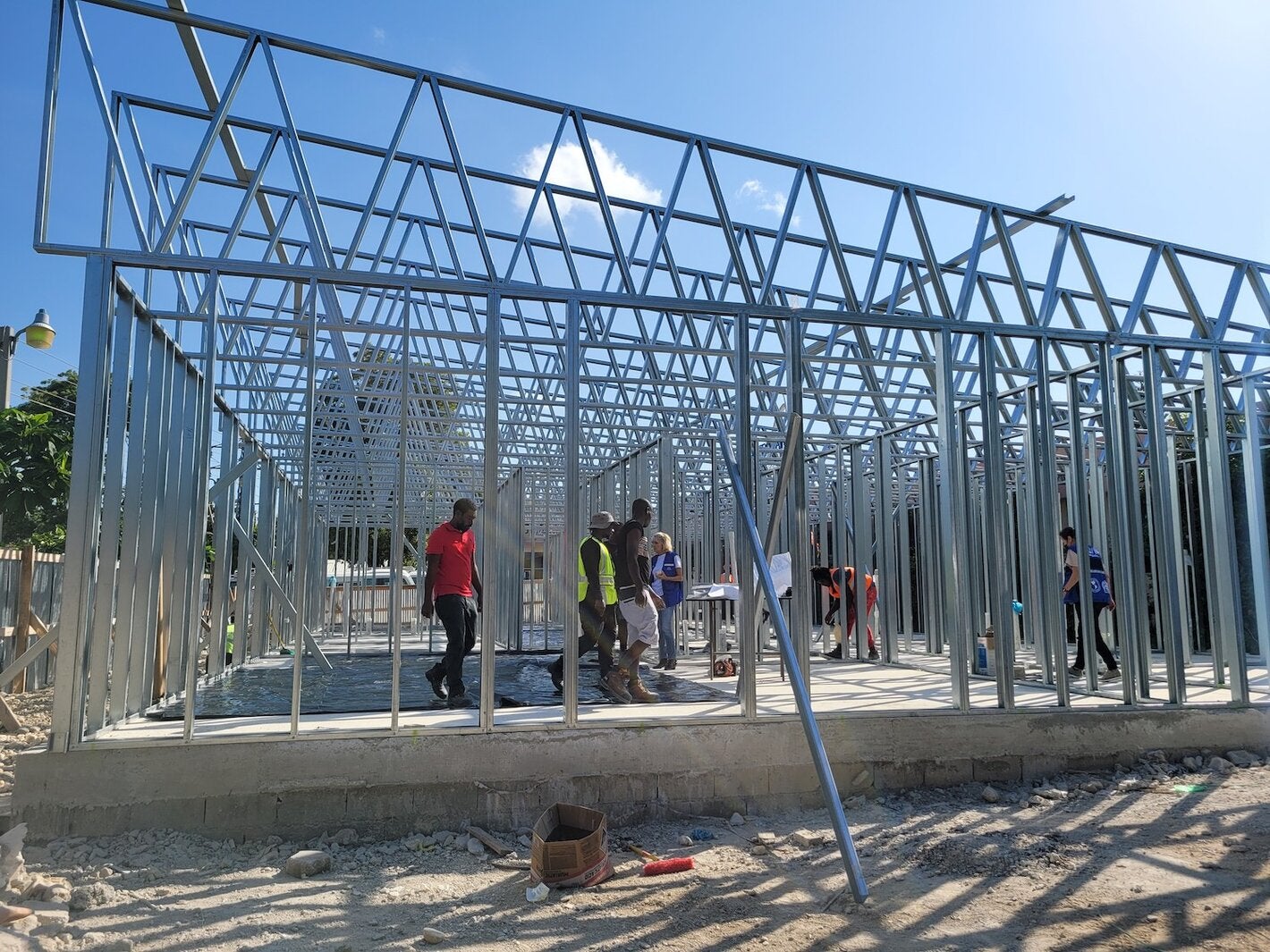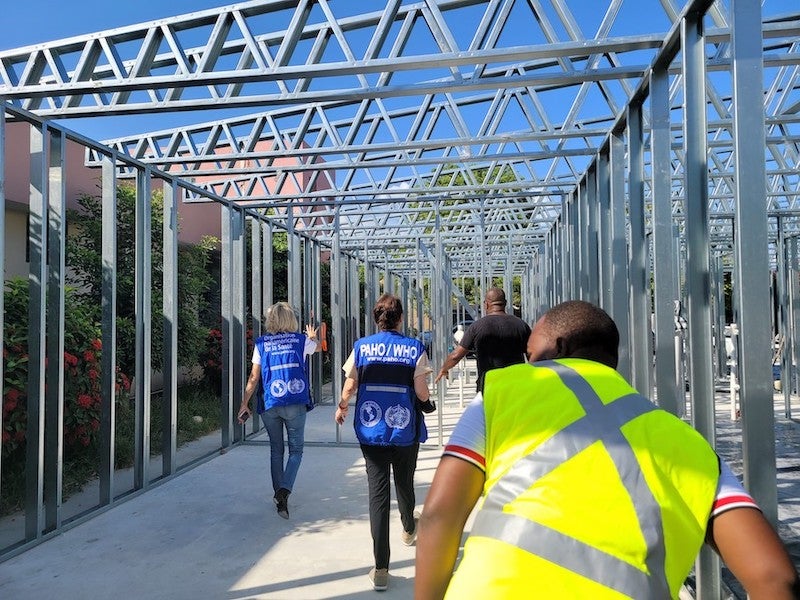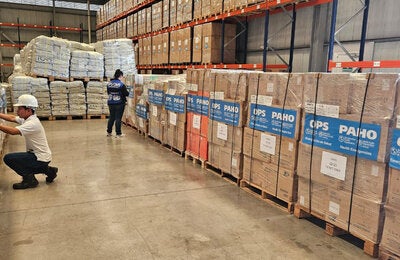
Washington, D.C. November 9, 2021 (PAHO) - Like many other high-risk disaster areas in the Caribbean and Latin America, Haiti needs a more resilient, sustainable, and environmentally sound healthcare infrastructure to deliver timely post-disaster care and reduce disaster loses in the future.
To this end, the Pan American Health Organization (PAHO/WHO) office in Haiti, together with the Ministry of Public Health and Population (MSPP), agreed in 2019 to build an upgraded, fully functional Accident & Emergency (A&E) department at one of the most important University hospitals in Port-au-Prince - Hôpital Universitaire de la Paix (HUP).
This project is part of PAHO’s Smart Hospital initiative which has already been successfully implemented in the Caribbean sub-region notably in St Vincent and the Grenadines, Dominica, Grenada, St Lucia, Jamaica, Guyana and Belize. It is the first Smart Intervention project to be implemented Haiti and much progress had been made since its inception, as construction began in May 2021.
In 2019, when this project was first conceptualised, the A&E department, lacked many basic medical equipment and resources such as Xray equipment and dedicated sterilisation area. Its water and electrical supply were also intermittent and often unreliable.
PAHO conducted detailed structural assessments of the existing department and feasibility analyses of the hospital layout to determine an optimal solution. Following these studies, assessments, and detailed discussions with the MSPP, the construction of an independent department was approved.

The new Ambulatory Emergency Room is custom designed and built in keeping with the Smart Hospitals concept and the provision of emergency healthcare services. The building structure is designed to withstand the natural hazards frequent in Haiti including hurricanes and earthquakes, using seismic X-bracing in orthogonal directions throughout the facility. The non-structural, mechanical and electrical services are designed to meet international safety standards. The facility will have full backup power and water storage to maintain operations in the event of national supply shortages or cuts.
Other measures incorporated into this project to improve the “Greenness” of the facility are the use of insulated wall panels to reduce the operational cooling cost, the use of rainwater harvesting to flush toilets and of environmentally and energy efficient plumbing and electrical fixtures throughout.
The new A&E department will have an in-patient capacity of 13 beds. Services will include examination rooms, a laboratory, mobile Xray, sterilisation, sutures and plaster room.



